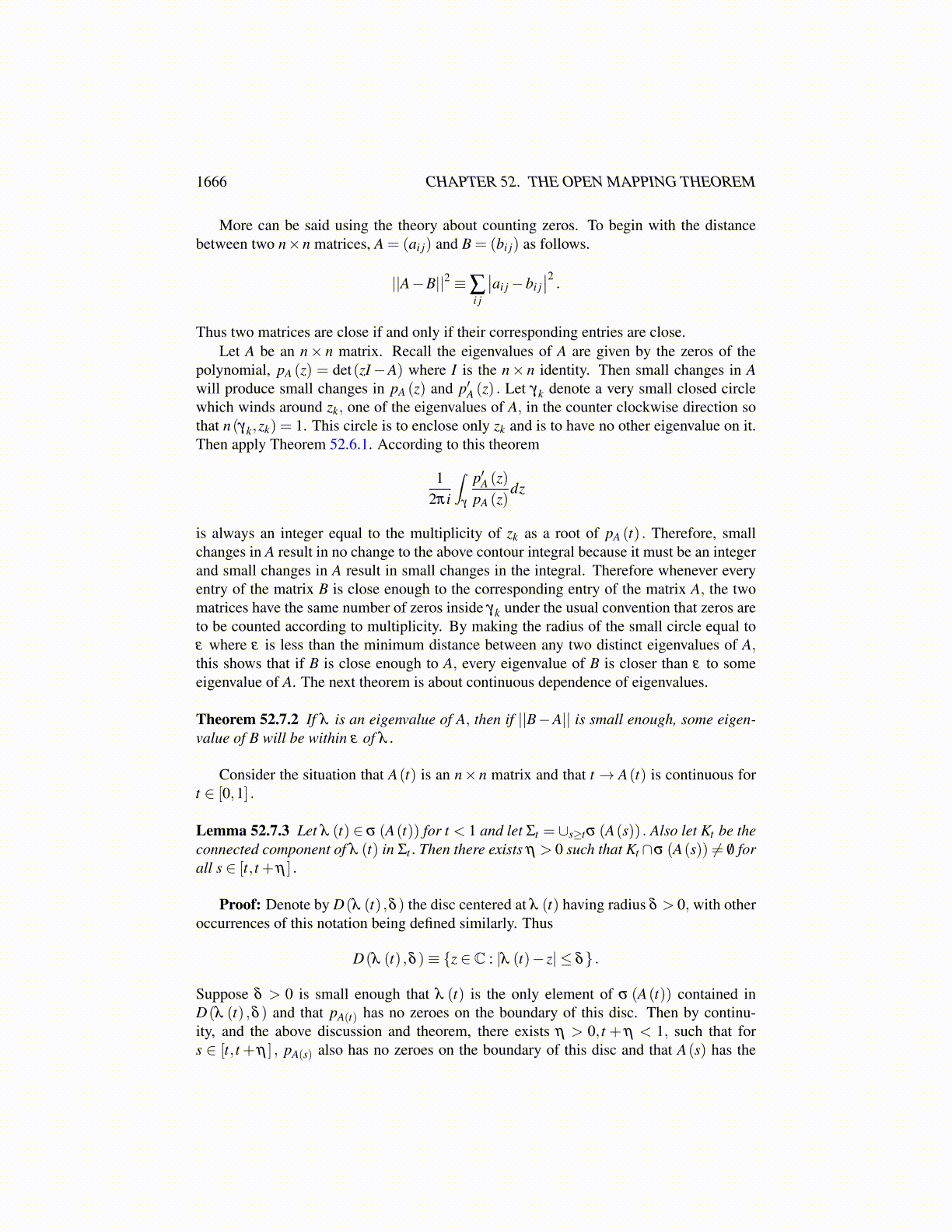
1666 CHAPTER 52. THE OPEN MAPPING THEOREM
would be a limit point of a sequence of points, zn, having f ′ (zn) = 0 which would imply, byTheorem 51.5.3 that f ′ = 0 on B(a,R) , contradicting the assumption that f −α has a zeroof order m and is therefore not constant. Thus the situation is described by the followingpicture.
f −α ̸= 0
f ′ ̸= 0
2ε
Now pick γ (t) = a+ εeit , t ∈ [0,2π] . Then α /∈ f (γ∗) so there exists δ > 0 with
B(α,δ )∩ f (γ∗) = /0. (52.6.8)
Therefore, B(α,δ ) is contained on one component of C\ f (γ ([0,2π])) . Therefore,
n( f ◦ γ,α) = n( f ◦ γ,z)
for all z ∈ B(α,δ ) . Now consider f restricted to B(a,2ε) . For z ∈ B(α,δ ) , f−1 (z) mustconsist of a finite set of points because f ′ (w) ̸= 0 for all w in B(a,2ε)\{a} implying thatthe zeros of f (·)− z in B(a,2ε) have no limit point. Since B(a,2ε) is compact, this meansthere are only finitely many. By Theorem 52.6.2,
n( f ◦ γ,z) =p
∑k=1
n(γ,ak) (52.6.9)
where{
a1, · · · ,ap}= f−1 (z) . Each point, ak of f−1 (z) is either inside the circle traced
out by γ , yielding n(γ,ak) = 1, or it is outside this circle yielding n(γ,ak) = 0 because of52.6.8. It follows the sum in 52.6.9 reduces to the number of points of f−1 (z) which arecontained in B(a,ε) . Thus, letting those points in f−1 (z) which are contained in B(a,ε)be denoted by {a1, · · · ,ar}
n( f ◦ γ,α) = n( f ◦ γ,z) = r.
Also, by Theorem 52.6.1, m = n( f ◦ γ,α) because a is a zero of f −α of order m. There-fore, for z ∈ B(α,δ )
m = n( f ◦ γ,α) = n( f ◦ γ,z) = r
It is required to show r = m, the order of the zero of f −α. Therefore, r = m. Each of theseak is a zero of order 1 of the function f (·)−z because f ′ (ak) ̸= 0. This proves the theorem.
This is a very fascinating result partly because it implies that for values of f near avalue, α, at which f (·)−α has a zero of order m for m > 1, the inverse image of thesevalues includes at least m points, not just one. Thus the topological properties of the inverseimage changes radically. This theorem also shows that f (B(a,ε))⊇ B(α,δ ) .